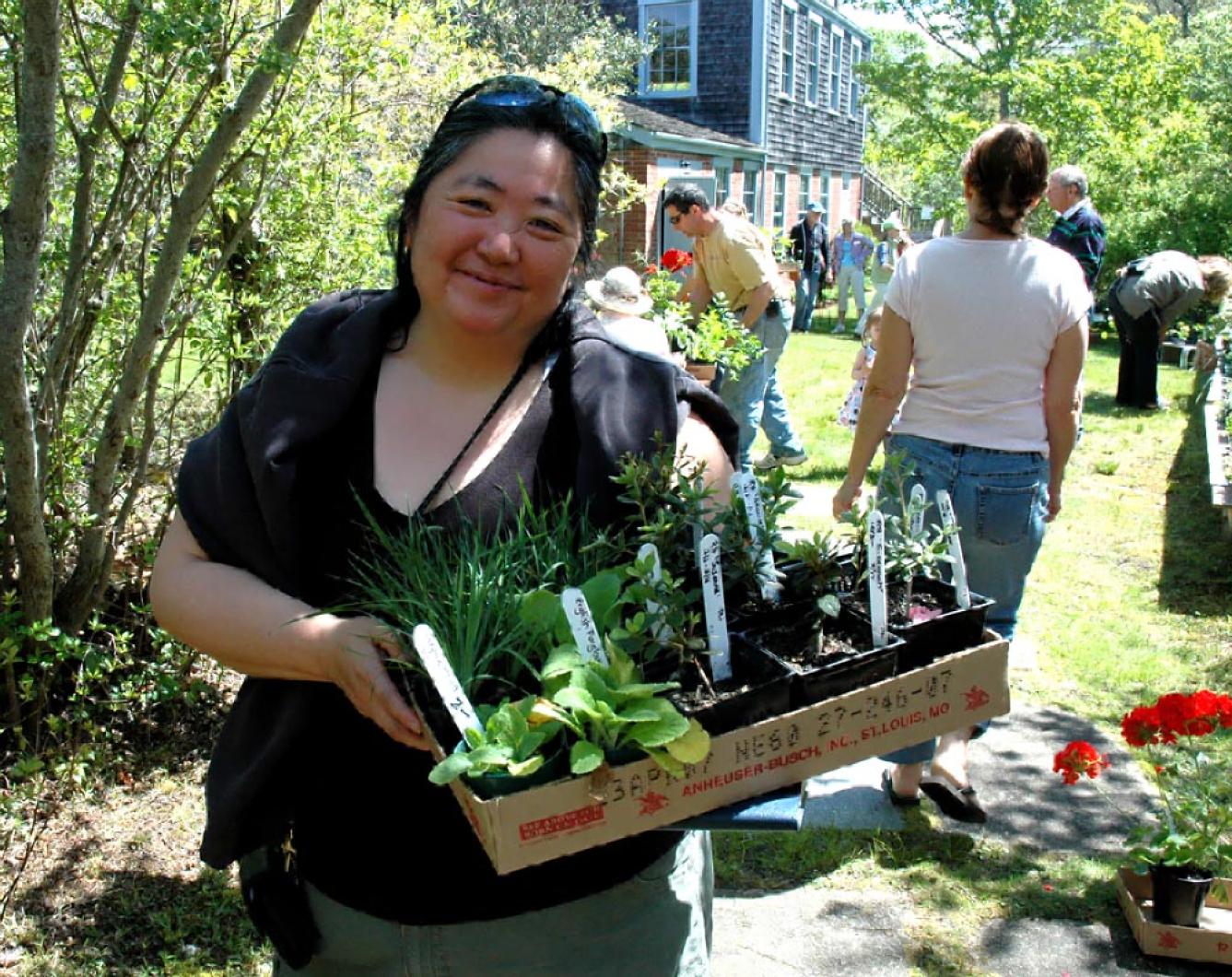What makes the Vineyard a special place for growing plants? C.L. Fornari, writer of garden information and radio host of the Saturday morning program Garden Line on WXTK (95.1 FM) is “happy to say that gardening and agriculture on the Island is thriving.”
Speaking to a packed audience at the Martha’s Vineyard Garden Club April meeting, Ms. Fornari presented a slide show of selected photographs from her soon-to-be-published book, A Garden Lover’s Martha’s Vineyard.
Saying that writing a book is like planting a garden in that the outcome can be surprising or not as one planned but satisfying all the same, the author admitted to taking more than 4,000 colored photographs for her book, of which 225 were selected.
Exactly one year ago in April, the author began riding the ferry, visiting first “the two most beautiful public gardens” at Mytoi and the Polly Hill Arboretum.
Remarking on the sight of the camellias in full bloom, Ms. Fornari returned again and again to the arboretum to photograph the changes that happen from week to week. Her slides of these visits focused on the light coming through oak leaf hydrangeas and on Laura Coit’s much-commended Homestead Border at Polly Hill. A photo of a “turkey terrorist” going through the gift shop drew laughs from the audience.
Showing the greenhouse filled with plants grown from seed and cuttings by garden club members, the speaker spoke admiringly of its organization and cited the club as “one of the Island’s treasures.”
Ms. Fornari was consistent in praising Island groups and individual gardeners across the island. Forgoing her initial plan to photograph gardens from the individual towns, she began with Chapter 1: Gardens Large and Small.
Her book spotlights such local gems as the Native Earth Tracking Farm where Rebecca Gilbert spoke openly on how difficult it is to make a living raising food.
A visit to the FARM Institute occasioned a demonstration of how Melinda De Feo helps kids plant tomatoes and cucumbers at the same time she drives home the concept of how those plants compete with weeds for nutrients and water in the soil. “What do we do about those weeds?” she asks. “ We’ll pull them out,” shout back the kids.
What C.L. Fornari’s stunning photographs affirm is the unquestionable “access of so many varieties of plants” at garden centers and of the Vineyard’s wide horticultural palate. Going Native Nursery and Wendy Forrest’s DayLily Farm received high praise. So do the guinea hens on patrol who guard against ticks at the DayLily Farm.
Any “out-of-control plant person” finds a receptive lens in Ms. Fornari’s camera. Martha Schmidt’s meadows of poetica daffodils should convince any die-hard dead-header that naturalization yields enduring results.
Individual garden approaches can be like the one taken by the late painter Dawn Greeley who turned a collapsing slope into a “painting with foliage.” Sarah Jane Silvia’s “shady retreat” in summer is “simply and elegantly done.” A beautiful little vegetable garden thrives on a very windy site in Aquinnah.
Judy Jahries succeeds in growing vegetables all summer and the big stand of Siberian Irises in her beautiful cottage garden drew appreciative sighs from the audience. Amazing perennial beds made striking slide presentations. Learning how seaweed, horse and cow manure and constant tilling amended the sandy soil in one vegetable garden was also impressive.
Suzanne Clark admits to getting “much pleasure out of planning” her cool and hot garden which she sees as “choreographing” the changes that “dance” throughout the season.
Ms. Fornari’s book will celebrate the “bring-it-on orange” in Peggy Turner Zablotny’s garden. She features the gardens maintained by Abigail Higgins and Jeff Whipple. Carlos Montoya in Aquinnah is singled out for championing the way native plants intermingle and grow in communities.
A pair of butterflies ended a program that celebrated our Island’s very special commitment to maintaining local agriculture and wild places.







Comments
Comment policy »